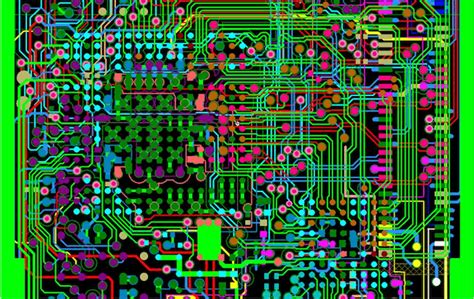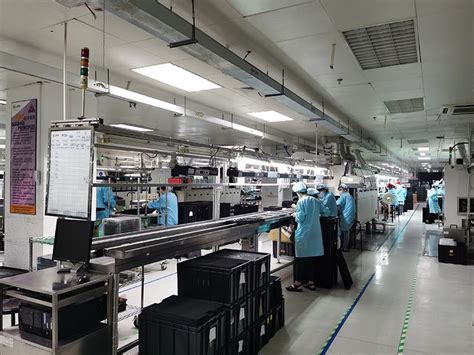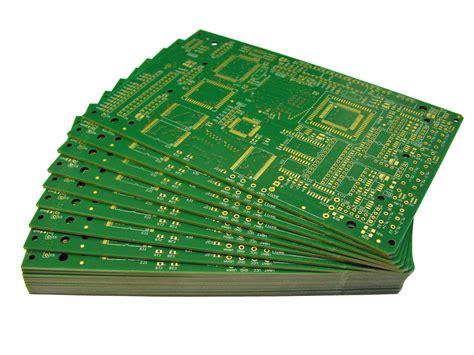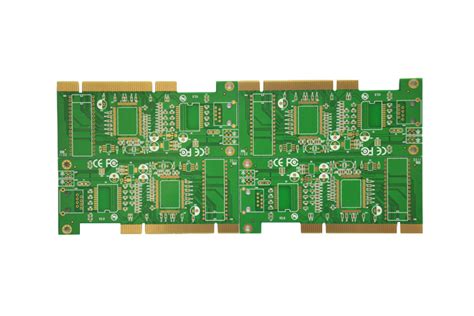Mastering Circuit Board Design and Manufacturing for Success
Key Takeaways
In the competitive landscape of pcb manufacturing, understanding the intricate details of the process is vital for success. To start, you need to focus on mastering the fundamentals of circuit board design. It is important to consider how your decisions during design will impact the pcb manufacturing cost and efficiency. When you partner with reputable pcb manufacturing companies, ensure they adhere to best practices that align with your project goals. This gives you a better chance of producing reliable and efficient products.
Moreover, implementing design for manufacturability can significantly influence your pcb manufacturing business outcomes, ensuring optimal production processes from the beginning. The layout of your circuit board should prioritize performance while minimizing potential production issues. By familiarizing yourself with common challenges in circuit board design and knowing how to overcome them, you will not only enhance product reliability but also streamline your engineering workflow.
Embrace advanced techniques in prototyping to refine your designs before full-scale production, which can reduce errors and costs. Lastly, maintain rigorous quality control practices during pcb manufacturing to address any defects early in the process, ensuring that your end products meet high standards for reliability and performance. Striving for excellence in these areas will significantly contribute to achieving success in your engineering projects.
Mastering the Fundamentals of Circuit Board Design
Understanding the fundamentals of circuit board design is essential for anyone venturing into the realm of pcb manufacturing. The process begins with a clear conceptualization of your project’s objectives, which helps in drafting a schematic that aligns with your requirements. A well-thought-out design not only enhances the performance of the circuit but also significantly reduces pcb manufacturing costs. You should consider collaborating with reputable pcb manufacturing companies that can provide insights on how to optimize your layout for both functionality and cost-efficiency.
It’s critical to embrace key principles such as using appropriate materials and ensuring proper signal integrity, which play vital roles in your circuit’s reliability. Moreover, employing simulation tools can help you detect potential issues before moving into the physical production phase. As you develop your layout, be mindful to include features that streamline the pcb manufacturing business, such as minimizing complex traces and ensuring components are easy to assemble.
“A solid foundation in design principles is just as important as advanced techniques when striving for success in circuit board projects.”
To support your understanding further, consider using a reference table that illustrates common component placements and their impact on both design efficiency and manufacturing output:
| Component Type | Recommended Placement Strategy |
|---|---|
| Microcontrollers | Centrally located for easy access |
| Power connectors | Edge placement to minimize space |
| Passive components | Clustered together to reduce path length |
By focusing on these fundamentals, you not only enhance your knowledge but also pave the way for a successful partnership with pcb manufacturing companies, ultimately leading to more reliable and efficient products. Remember, mastering these basics is crucial before delving into more advanced methodologies that can further enhance your work in circuit board design.
Key Principles of Effective Circuit Board Manufacturing
When embarking on your journey in pcb manufacturing, understanding the key principles that govern the process is crucial for success. One of the first aspects to consider is design for manufacturability, which ensures that your designs can be easily transformed into functional boards. Collaboration with pcb manufacturing companies early in the design phase can provide insights into their capabilities, helping you avoid costly adjustments later in production. Moreover, it’s essential to assess the pcb manufacturing cost associated with various materials and processes; this step aids in budgeting and optimizing resources effectively. Implementing robust quality control measures can significantly impact the reliability of your final product, allowing you to meet industry standards and customer expectations consistently. Additionally, staying informed about advancements and best practices in the pcb manufacturing business will enable you to adapt quickly and maintain a competitive edge. By focusing on these principles, you’re well-equipped to enhance both the efficiency and effectiveness of your circuit board projects. For further information, consider visiting Andwin PCB.
Design for Manufacturability: Ensuring Success from the Start
In today’s competitive landscape, understanding design for manufacturability (DFM) is crucial for your success in the pcb manufacturing realm. By incorporating DFM principles early in your design process, you can significantly reduce pcb manufacturing costs and avoid potential pitfalls that could lead to delays or subpar products. When collaborating with various pcb manufacturing companies, effective communication about your design requirements will help ensure that your specifications align with their capabilities. Simple adjustments, such as selecting materials that are readily available or optimizing trace widths, can greatly enhance the ease of production without sacrificing performance.
Moreover, recognizing the inherent nuances of the manufacturing process allows you to anticipate challenges and streamline workflows. Establishing a strong relationship with your chosen pcb manufacturing business enables you to gain insights into their processes, further assisting you in tailoring your designs for maximum efficiency. By proactively addressing manufacturability from the onset, you not only bolster the reliability of your product but also contribute positively to its overall success in the market—a win-win situation for all parties involved.
Optimizing Circuit Board Layout for Performance and Reliability
When designing a circuit board, the layout plays a crucial role in determining overall performance and reliability. It is essential to focus on strategic placement of components to reduce signal interference and enhance the electrical performance. PCB manufacturing efficiency can be significantly improved by considering factors such as trace width and spacing, which directly influence current capacity and thermal dissipation. As you engage with PCB manufacturing companies, be sure to communicate your design intentions clearly, as their expertise can help you avoid common pitfalls related to layout decisions.
Additionally, implementing a proper ground plane is fundamental in minimizing electromagnetic interference (EMI), which is vital for high-frequency applications. The cost of PCB manufacturing can skyrocket if design adjustments are necessary during production, so investing time in optimizing your layout from the start will pay dividends later on. It’s also advisable to account for the entire assembly process; working closely with your PCB manufacturing business can provide insights that enhance manufacturability while preserving functionality. Adopting these strategies will lead not only to enhanced efficiency but also fortify the reliability of your final product, ultimately resulting in a standout engineering project.
Common Challenges in Circuit Board Design and How to Overcome Them
In the realm of pcb manufacturing, several challenges can arise that may hinder the efficiency and effectiveness of your designs. One common issue is the complexity of the circuit layout, which can lead to problems such as signal integrity and electromagnetic interference. To tackle this, you should prioritize a well-organized design process, ensuring that you follow best practices for layout compaction and placement of components. Additionally, being aware of the pcb manufacturing cost is essential, as intricate designs can lead to higher expenses; hence, striking a balance between complexity and budget is key.
Another challenge you may face involves ensuring that your design meets the requirements set by pcb manufacturing companies. This means you need to communicate clearly with manufacturers about your specifications and understand their capabilities fully. Utilizing design rules found in manufacturing documentation can streamline the process and avoid potential pitfalls.
Additionally, thermal management is a critical consideration. As your circuits demand more power, understanding how to dissipate heat effectively becomes crucial. You may need to integrate thermal vias or pad inserts for improved heat distribution on your board.
Lastly, do not underestimate the value of prototyping in overcoming design challenges. Rapid prototyping allows you to assess the functionality of your designs before committing to larger-scale pcb manufacturing business operations. By iterating based on feedback from prototypes, not only can you refine your designs but also enhance product reliability and longevity in market performance.
By addressing these common challenges proactively, you position yourself for success in circuit board design and manufacturing.
Advanced Techniques in Circuit Board Prototyping
In the dynamic world of pcb manufacturing, prototyping serves as a crucial phase in the design process. When you delve into advanced techniques, you will discover methods that can significantly enhance the accuracy and functionality of your initial designs. One prominent technique is the utilization of 3D printing for rapid prototyping. This technology allows you to create physical models of your circuit boards, providing a tangible reference for design adjustments before committing to larger-scale production. Additionally, employing software simulation tools can help identify potential issues in your design early on, reducing iterations and ultimately lowering the overall pcb manufacturing cost.
Another technique gaining traction is the use of advanced materials that cater to specific performance requirements. By selecting appropriate substrates from various pcb manufacturing companies, you can enhance thermal management and signal integrity, leading to a more reliable final product. It’s imperative to maintain open communication with your production partners; they can offer insights into material choices that may align with your project goals.
Furthermore, integrating collaborative platforms during the prototyping phase ensures that designers and engineers are on the same page regarding changes and enhancements. This not only streamlines revisions but also effectively positions your pcb manufacturing business for success as you move towards final production runs. By leveraging these advanced techniques in circuit board prototyping, you set a strong foundation that contributes to improved product reliability and efficiency throughout subsequent phases of development.
Best Practices for Quality Control in Circuit Board Production
When diving into pcb manufacturing, ensuring quality control throughout the production process is essential for delivering reliable and efficient products. One of the best practices you can implement is to develop a comprehensive quality management system that outlines key criteria for assessing every stage of the production cycle. This includes inspecting materials for consistency and quality before they enter the production line, ensuring that all components meet specified standards. Additionally, collaborating closely with pcb manufacturing companies can help you stay informed about industry benchmarks, which in turn can influence your inspection procedures and drive improvements in your pcb manufacturing business.
Implementing rigorous testing protocols is another vital aspect of quality control. By integrating various testing methods, such as automated Optical Inspection (AOI) and functional testing, you can proactively identify potential issues in your designs before they escalate into costly mistakes. Understanding the relationship between pcb manufacturing cost and quality is crucial; investing in thorough testing processes can ultimately lead to significant savings by reducing rework and increasing customer satisfaction.
Moreover, maintaining open lines of communication with your team allows for quicker response times to any challenges that arise during production. Regularly training staff on updated quality control measures will further enhance your overall process and help instill a culture of quality within your organization. By focusing on these practices, you position yourself to achieve exceptional results in your circuit board projects while minimizing risks associated with poor-quality output.
Integrating Testing and Iteration into the Design Process
In the realm of pcb manufacturing, integrating testing and iteration into your design process is essential for ensuring a high-quality product that meets performance standards. You should prioritize early testing phases to identify potential issues before moving forward with production. By collaborating with pcb manufacturing companies, you can leverage their expertise to refine your designs through iterative feedback loops. This not only helps in minimizing the pcb manufacturing cost but also enhances the overall reliability of your product. Consider employing rigorous prototype testing at various stages of development, allowing you to make necessary adjustments while keeping a close eye on design specifications that can impact manufacturability. This iterative approach not only results in a final product that aligns more closely with your vision but also mitigates risks associated with launching a new pcb manufacturing business. Ultimately, by embracing a culture of continuous improvement and thorough testing, you can ensure that your designs are robust and ready for successful market entry while meeting the high standards expected in today’s industry.
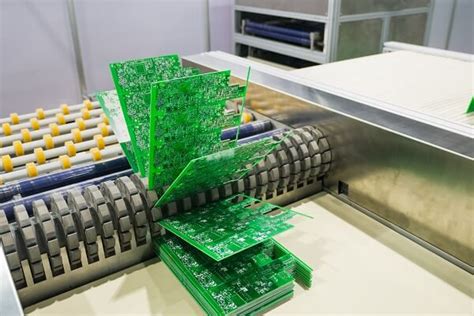
Conclusion
In summary, successful circuit board design and pcb manufacturing are essential components for ensuring the reliability and efficiency of your engineering projects. By integrating best practices throughout the process, from the initial layout to final production, you can significantly enhance product performance. Understanding pcb manufacturing cost is crucial, as it allows you to make informed decisions about materials and processes that can ultimately affect your bottom line. Partnering with reputable pcb manufacturing companies can provide you with the necessary expertise and resources to navigate common challenges and optimize your designs effectively. If you’re considering a venture in the pcb manufacturing business, it’s vital to focus on quality control measures and continuous improvement. This approach not only elevates your products but also positions you strategically in a competitive market, increasing both reliability and customer satisfaction.
FAQs
What is pcb manufacturing?
PCB manufacturing refers to the process of creating printed circuit boards (PCBs) which are essential components in electronic devices. This complex procedure involves designing, fabricating, and assembling the circuitry that will connect various electronic parts.
How do I choose the right pcb manufacturing companies?
When selecting pcb manufacturing companies, consider factors such as their experience, quality certifications, production capabilities, and customer reviews. It’s crucial to choose a company that aligns with your specific needs in terms of complexity and scale.
What factors influence pcb manufacturing cost?
The pcb manufacturing cost can be affected by several factors including material selection, board complexity, layer count, the quantity ordered, and any additional services like prototyping or assembly. Understanding these can help you manage your budget effectively.
Can I start a pcb manufacturing business with limited expertise?
While it may be challenging to start a pcb manufacturing business without technical expertise, it’s not impossible. Collaborating with experienced professionals or investing in training can significantly enhance your chances of success in this competitive market.
Ready to explore more about PCB manufacturing?
For insights and services related to pcb manufacturing, please click here.

